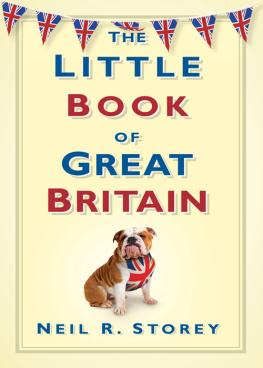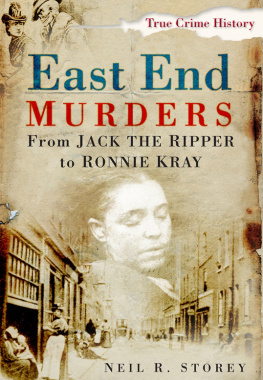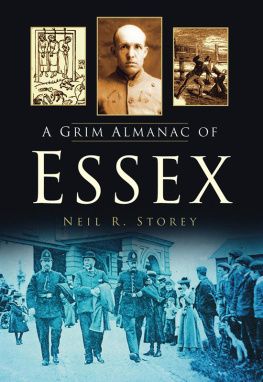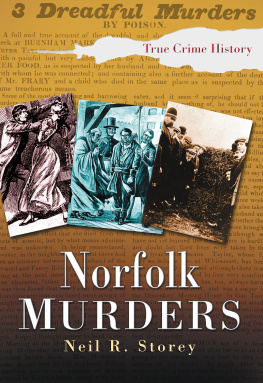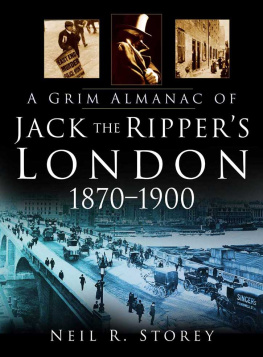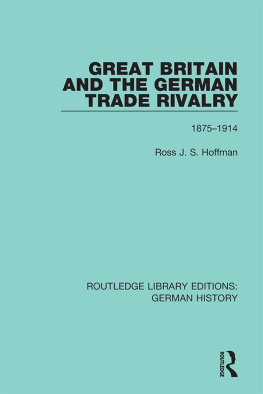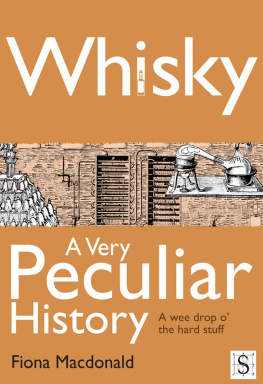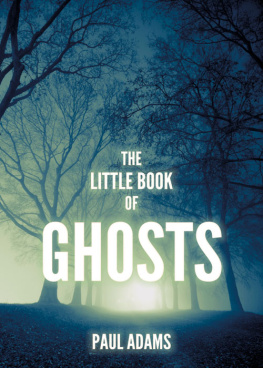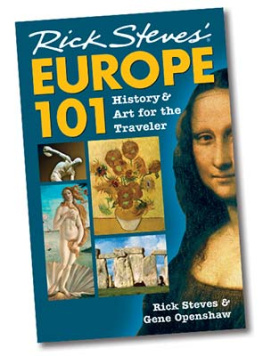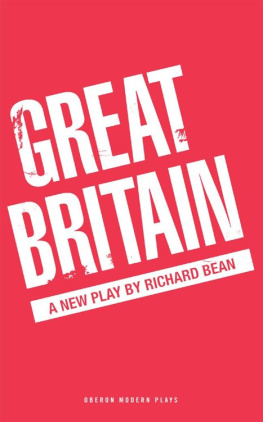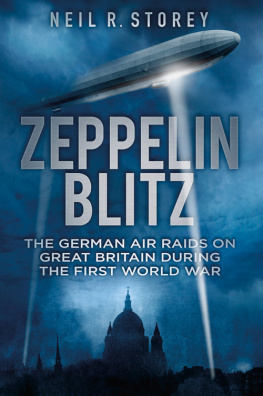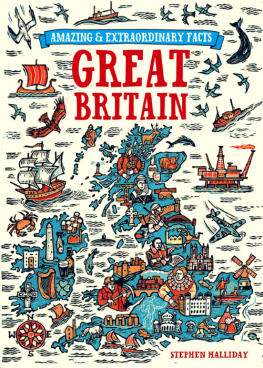In memory of Theo,
a Great Briton.

CONTENTS

T he British are a unique race because much of their lives, work and leisure are inextricably entwined with Britains history, scenery, celebrations, traditions and love of nostalgia that endows them with their own very distinctive identity and sense of place.
Visitors to these shores can only obtain some impression of the country and its character but how many people really know Britain, even if it is the country they call home? Despite being a small island there is always something new to discover, be it fascinating, frivolous, quirky or even bizarre. This book does not pretend to be a history, concise almanac or guide to Great Britain, instead it is a celebration of Britishness through a host of topics that explore the more eccentric and eclectic people and things that contribute to and define Great Britain; indeed, this book is a collection of the ephemeral and miscellaneous facts about this land you didnt know you wanted to know until now. The contents of this volume will enliven conversation or quiz and leave even those who know and love Britain with the well fancy that! factor. Things like
Queen Elizabeth I (15331603) was the first British monarch to have a fully fitted flushing toilet.
A saggar makers bottom knocker was a real job in the British pottery industry.
Biggles creator Captain W.E. Johns began his professional life as an assistant sanitary inspector.
There are over 470 recipes and flavours for British sausages and 1,200 varieties of native British apples.
The first person to be convicted of speeding is believed to be Walter Arnold of East Peckham, Kent, who on 28 January 1896, was fined 1s plus costs for driving at 8mph.
The Green Cross Code man and the helmeted figure of Darth Vader in Star Wars were both played by British muscle man David Prowse.
There are 19,500 bus stops in London.
The first World Conker Championships were staged at Ashton, Northamptonshire, in 1965.
The oldest continually held race has been held at Carnwath in Lanarkshire, Scotland since 1508 and still maintains the same prize for the winner a pair of hand-knitted knee-length socks.
And my personal favourite
Ian Fleming, the creator of 007 James Bond, was also the author of childrens favourite Chitty Chitty Bang Bang.
You will soon see the ease with which one can enliven conversation, impress and intrigue family with the facts and frivolities obtained from this book.
TOPOGRAPHY &
AROUND BRITAIN

ABOUT BRITAIN
Great Britain was created by the Acts of Union between the Kingdom of England and Wales and the Kingdom of Scotland on 1 May 1707, and the twin Acts that united the Kingdom of Great Britain and the Kingdom of Ireland were passed respectively on 2 July 1800 and 1 August 1800 to create the United Kingdom of Great Britain and Ireland that came into effect on 1 January 1801.
The total area of the United Kingdom is approximately 94,060sq miles.
The coastline of Great Britain stretches for 11,073 miles and there is no location in Britain that is more than 74 miles from the sea.
The highest point in Great Britain is the summit of Ben Nevis in Scotland which soars skywards to 4,406ft.
The lowest point in Great Britain is to be found at Holme Fen in Cambridgeshire at around 9ft below sea level.
The oldest rocks in the British Isles are the Lewisian gneisses, metamorphic rocks found in the far north-west of Scotland and in the Hebrides (with a few small outcrops elsewhere), which date from at least 2,700 million years ago.
During the Anglian Glaciation, about 478,000 to 424,000 years ago, ice up to 3,300ft thick reached as far south as London and Bristol and diverted the River Thames to its present course.

The prevailing wind across Great Britain is from the south-west.
The Wash is the largest estuarine system in the United Kingdom and contains Englands largest official nature reserve. Providing an internationally important habitat for fifteen species of birds, it is home for 6,000 common seals and harbours a tenth of Britains saltmarsh.
CANONICAL LATIN NAMES FOR THE
ANCIENT REGIONS OF BRITAIN
Albion or Britannia (Britain)
Anglia (England)
Caledonia (Scotland)
Cambria (Wales)
Cornubia (Cornwall)
Hibernia (Ireland)
Scotia (originally the Roman name for Ireland). The name shifted in the Middle Ages to designate the part of Britain lying north of the Firth of Forth (the Kingdom of Alba). By the later Middle Ages it had become the fixed Latin term for what in English is called Scotland.
Ancient England and Wales had its capital at Winchester and in Westminster after the Norman Conquest of 1066, and consisted of the kingdoms of Wessex, Mercia, East Anglia, Northumbria, Cornwall and the Principality of Wales.
Telly Savalas, famous for his appearances in the American TV cop show Kojak in the 1970s, made three fifteen-minute British travelogue and tourism films entitled: Telly Savalas Looks at Aberdeen (1981), Telly Savalas Looks at Portsmouth (1981), and Telly Savalas Looks at Birmingham (1981). Telly speaks with confidence about the history, notable features and events he saw in each location (although he did not visit any of the locations during the filming) and concluded with a special variation of one of his popular catchphrases: So long Portsmouth, Heres looking at you; So long Aberdeen, Heres looking at you and my personal favourite where Telly remarks candidly: Yes, its my kind o town, so, so long Birmingham, heres looking at you.
The remarkable Telly Savalas trilogy was followed by the series Pete Murray takes you to where the popular DJ and regular Juke Box Jury panellist (195967), guided audiences around Nottingham (1982), Hastings (1982) and Coventry (1983).
EXTREMITIES
Although the extremities of Great Britain are often claimed as John OGroats in Scotland and Lands End in the south, the northernmost point in Britain is in fact Dunnet Head (also known as Easter Head) in Caithness, Scotland, while the most southernmost point is The Lizard in Cornwall. The most westerly point of the mainland of Great Britain is at West Ardnamurchan in the highlands of Scotland and the furthest point east is to be found at Lowestoft Ness in Suffolk.
THE CENTRE OF BRITAIN
A number of locations have claimed to be the centre of Great Britain. The stone cross at Meriden in the West Midlands was claimed to be the centre for centuries. The claim for the centre of Britain was also made for the Midland Oak on the boundaries of Lillington and Leamington Spa in Warwickshire and Haltwhistle in Northumberland. Using modern methods of mapping using global positioning system (GPS), according to Ordnance Survey, the centre of mainland Great Britain is at grid reference SD 723 367 (3.4 miles south-west of Clitheroe, between Whalley, Billington and Calderstones Hospital in Lancashire). To be precise SD 72321 36671 to the nearest metre.
Next page
